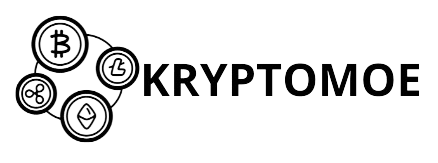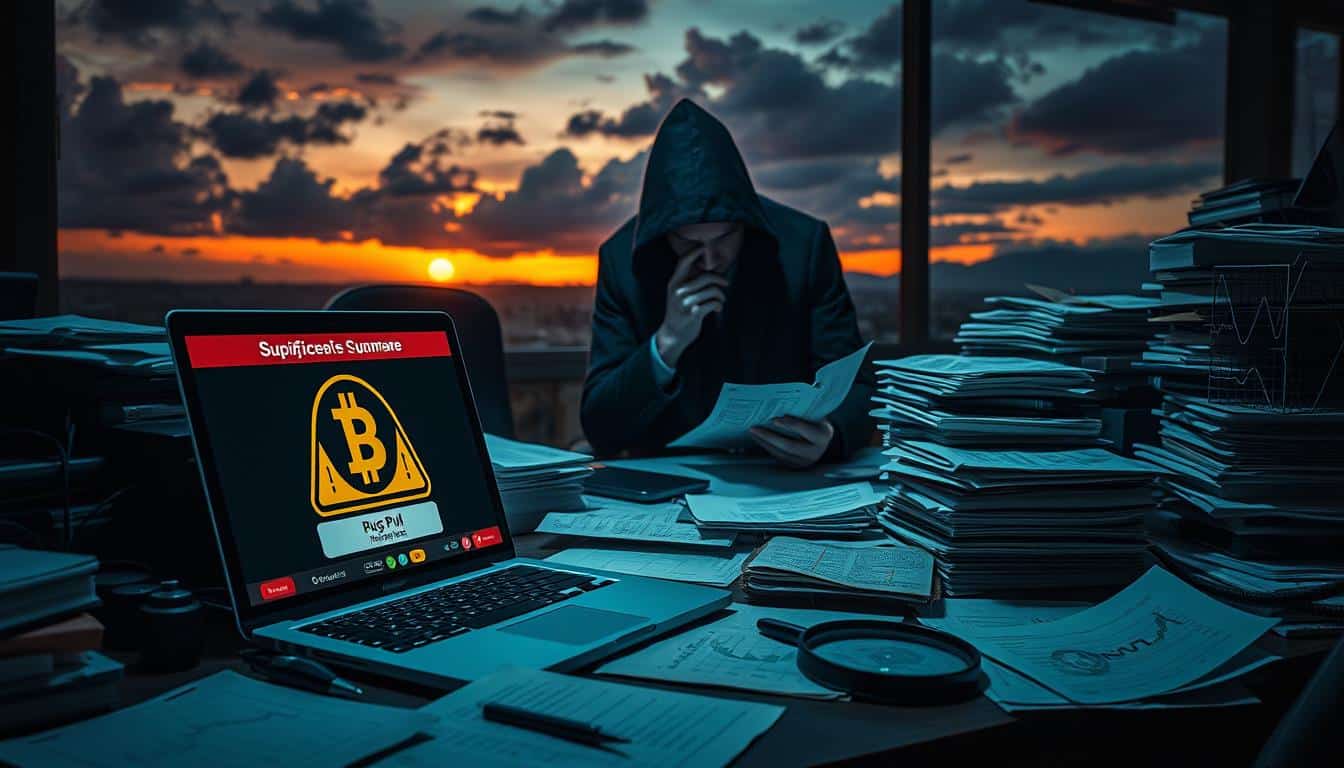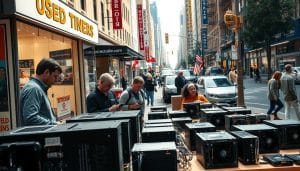About 40% of new crypto tokens might be risky, showing signs of possible rug pulls soon after they start. This shows how the crypto boom brings not just new chances but also scams.
Many traders, caught in the excitement, have lost a lot because they didn’t check things first. With crypto becoming very popular quickly, there are more scams. They offer big returns for little risk. To stay safe, you need to know how to avoid these scams. This means being careful and checking things before buying crypto.
Rug pulls are when creators disappear with your money, leaving you with nothing. They’re common if the team is hidden, there are no checks on the project, or if money can be taken out easily. Since you can’t get your money back like at a bank, you need to be careful. Do your research, use strong passwords, turn on two-factor authentication, and don’t make quick, unplanned investments.
I’m not here to scare you. I just want to share what I’ve seen. Start with a good plan. Treat crypto as something risky and spread your investments. This advice will help you avoid losing your money to rug pulls.
Key Takeaways
- Rug pulls are common in unaudited, anonymous projects; always verify audits and liquidity status.
- Adopt secure crypto investing practices: strong passwords, two-factor authentication, and cautious link-clicking.
- Protecting yourself from rug pull fraud starts with a financial plan and limiting FOMO-driven trades.
- Diversify holdings and consider insured options for short-term goals to preserve capital.
- Research teams, roadmaps, and community history before committing funds.
Understanding Rug Pulls: What Are They?
I’ve noticed projects quickly rising and then disappearing. This shows us something important: rug pulls are scams that are easy to spot. They start with a lot of excitement and end with people losing their money.
Definition of Rug Pulls
A rug pull is when creators start a new token or DeFi project, get people to invest, then take off with the funds. It can happen suddenly or gradually. But the outcome is always the same: investors can’t get their money back because the transactions can’t be reversed.
Common Characteristics of Rug Pulls
Rug pulls usually follow the same pattern. It begins with heavy promotion on social media, creating a fear of missing out. Then, you’ll notice a lack of clear information, like missing whitepapers or details about the project.
Look out for anonymous teams and sudden withdrawal of funds, which are major warning signs. Scammers push urgency to make people act fast. Spotting these signs can help you prevent falling for these scams.
Rug pulls can take many forms—like fake coins, DeFi scams, or NFT frauds. They exploit smart-contract weaknesses to steal funds. To avoid these scams, check for audits, team information, and locked funds.
Based on what I’ve seen, projects that focus more on hype than substance usually don’t end well. I use a simple checklist to evaluate new tokens: is the team open about their identity, are the contracts audited, is the liquidity locked, and is there a clear plan? This helps me avoid most rug pulls.
| Indicator | What to Look For | Why It Matters |
|---|---|---|
| Team Identity | Named founders, LinkedIn profiles, verifiable work history | Real people with reputations are less likely to vanish |
| Audit Status | Security audits from CertiK, Quantstamp, or PeckShield | Audits reduce hidden backdoors and contract risks |
| Liquidity | Locked liquidity with a timelock or vesting schedule | Prevents instant removal of funds by developers |
| Community Signals | Organic engagement, GitHub activity, sensible Discord threads | Healthy communities ask questions and demand transparency |
| Tokenomics | Clear supply, vesting, and distribution plans | Unrealistic rewards or massive team allocations raise alarm |
The Impact of Rug Pulls on Investors
I have seen how fast markets can change when projects fail. Rug pulls damage both wallets and trust. This happens when quick profits override careful checks. The outcome is that many lose money and feel stressed for a long time.
Statistics on Rug Pulls in the Crypto Market
Data from blockchain experts and FBI reports show a rise in such incidents lately. Firms like Chainalysis and CertiK highlight increases in suspicious token activities. These facts show the importance of avoiding rug pull scams.
Victims often face fast losses when their assets are taken. Tools like Etherscan and BscScan help find these problems early. I use these to catch issues before fear grows.
Notable Rug Pull Cases and Their Consequences
Some projects failed completely, leaving assets as worthless. Others faded slowly, breaking trust in new projects. This was common with NFTs that relied too much on hype.
Contacting the FTC or police might not always get your money back. The best approach is to learn how to protect your crypto investments. This includes careful checks, setting risk limits, and doubting too-good-to-be-true promises.
| Aspect | Typical Impact | Practical Action |
|---|---|---|
| Hard Rug Pull | Immediate total loss of liquidity; token value collapses | Use on-chain liquidity locks; avoid unknown contracts |
| Soft Rug Pull | Gradual value erosion; project abandons roadmap | Monitor developer activity; verify roadmap progress |
| NFT Exit Scams | Fake artwork or mass drops with no rarity; marketplaces flooded | Confirm artist identity; check provenance on-chain |
| Influencer-Driven Pump | Rapid price spikes followed by coordinated sell-offs | Treat promos skeptically; confirm tokenomics and liquidity |
| On-Chain Red Flags | Whale transfers, sudden liquidity removal, locked tokens unlocked | Track flows with Etherscan/BscScan; set alerts |
| Regulatory Response | Reports to FTC, FBI IC3 increase; legal recovery limited | Document transactions; seek cybersecurity and legal help early |
Key Red Flags to Identify Rug Pulls
Many projects look good but quickly fail. It’s important to identify signs of scams in the crypto world early. Here, I share common red flags and my initial checks before investing.
Anonymous Teams and Lack of Transparency
Anonymous teams are a clear warning sign. Genuine founders can be verified through GitHub, LinkedIn, or past projects. If LinkedIn bios are copied or GitHub profiles are empty, I avoid the project.
Looking at token distribution is crucial. If the team holds too many tokens or if liquidity isn’t secured, be cautious. Projects without security audits from firms like CertiK or Trail of Bits are harder to trust.
Secretive operations and unclear private sales are suspicious. Real startups share their plans, timelines, and codes. If these are missing, reconsider supporting them and investigate further.
Unreasonable Promises and Hyperbolic Claims
Promises of guaranteed returns are false advertising. No trustworthy crypto company offers fixed high profits. Beware of schemes that urge immediate investment, creating a fear of missing out.
Watch out for fake endorsements and direct messages asking for money. Legitimate organizations do not request funds over private messages or Telegram.
My methods to avoid rug pulls include checking audits, ensuring liquidity is locked, and verifying partnerships. Question any unverifiable claims and be cautious.
- Verify identities via GitHub, LinkedIn, and past on-chain work.
- Confirm audits from recognized firms and locked liquidity.
- Review token distribution for fair, transparent allocations.
- Ignore urgent investment pressure and unsolicited DMs.
- Cross-check community activity and on-chain metrics before committing funds.
Researching Projects Before Investing
Before I invest, I have a checklist. I check the company’s registration, who founded it, and look for any regulatory warnings. I also keep an eye on token transfers and sudden changes in money flow. These steps are crucial for understanding crypto projects and controlling risk.
I do technical checks next. I review the token’s details on Etherscan or BscScan, and check for locked liquidity. I also peek at GitHub if there’s something to see. Relying on facts rather than promises helps me invest safely in crypto and avoid scams.
Tools for Thorough Project Analysis
I use key tools each time I analyze a project. Blockchain explorers show me the contract code and wallet activities. Audit reports from CertiK, Quantstamp, and Trail of Bits tell me if there are any flaws in the smart contracts.
Tools like Dune Analytics and DeFi Llama provide data on the project. I also look at the token’s economics: total supply, how it’s distributed, and team shares. These steps help me spot potential problems early.
| Type | Tool / Resource | What I Look For |
|---|---|---|
| Blockchain Explorer | Etherscan, BscScan | Contract source, wallet transfers, verified bytecode |
| Audit Firms | CertiK, Quantstamp, Trail of Bits | Known vulnerabilities, remediation notes, audit date |
| Analytics | Dune Analytics, DeFi Llama | TVL trends, liquidity depth, protocol usage |
| Code Repositories | GitHub | Commit history, contributor activity, open issues |
| Community Reviews | Reddit, Twitter, Telegram | Developer responses, user complaints, engagement tone |
Importance of Whitepapers and Roadmaps
Whitepapers show a project’s technical side. A good one explains the system, how it agrees on things, and token details. If it’s all buzzwords and no clear info, I see it as a red flag.
Roadmaps help me understand a project’s goals and if it can meet them. I verify any partnerships they mention and their timelines. This helps identify teams that fulfill their promises instead of making empty claims.
In the end, I combine reading documents with looking at blockchain data and community feedback. This approach helps me pick projects with confidence and steer clear of possible scams.
The Role of Community and Social Media
I keep an eye on new projects from the start. For me, the vibe of the community is key in deciding to invest time or money. Quick wins can be misleading, hiding bigger risks. The early buzz in places like Discord and Telegram shows a lot about the team’s focus, user worries, and how quick they reply.
A strong community is seen through real questions and answers, spotting bugs, and thoughtful discussions. This kind of interaction is a top way to check a crypto’s safety. On the other hand, fake activity is easy to spot. It’s repetitive, seems robotic, and overly positive. I noticed this when watching Telegram chats repeat the same messages during price spikes.
Evaluating Community Feedback and Engagement
Look for messages that ask tough questions about the project’s economics and future plans. Pay attention to how the developers respond. Replies that are slow and detailed mean more than quick, generic answers.
Tools like LunarCrush or Santiment help track when people suddenly start talking a lot about a project. If the buzz comes without real discussion, it might be fake excitement, not real interest. I also look at independent reviews and forums to get a broader view.
A good sign is when moderators enforce rules and share clear updates. This kind of honesty lowers scam risks. For those wanting to learn more, this guide on discovering early meme coins is useful: how to find meme coins early.
The Dangers of Influencer Promotions
Influencers can quickly influence markets. Some take advantage, using fake endorsements and pretending to be celebrities. The risks include fake videos and false promoters pushing scams or impossible promises.
Never trust investment tips that come from private messages. Always check the official sources and watch out for unusual wallet activity. Ignore any promises of big money fast and look for authentic reviews or proof on the blockchain instead.
- Red flag: the same promotional words on different influencer posts.
- Red flag: accounts that aren’t verified but claim celebrity support.
- Red flag: private offers for “special” presales.
Staying aware of both community vibes and influencer tricks is crucial. When we miss these signs, dodging crypto scams gets tougher. Be skeptical, double-check everything, and prioritize real talks over exciting but empty promises.
Best Practices for Secure Investments
I like to keep my plan simple. Having a clear financial plan reduces the temptation to make impulsive decisions. It helps me stick to crypto investment safety tips more easily. I make sure to keep my emergency savings separate from my speculative funds. I also set a limit on how much I’m willing to risk on new token launches.
Diversification Strategies for Crypto Investments
I spread my risk in different classes of assets, including within the crypto space. I keep some of my capital in exchanges like Coinbase or Kraken. I store some in self-custody with devices like Ledger or Trezor. A smaller, predetermined amount goes towards high-risk launches.
To diversify my crypto investments, I use different strategies. I invest in large-cap coins, stablecoins, staking, and select positions in DeFi. This approach helps reduce the risk of losing everything at once. It also helps even out the ups and downs of the market.
Every three months, I check how my investments are spread out and rebalance if necessary. This method helps me not to let my emotions drive my trading decisions. It’s a discipline that fosters long-term growth.
Utilizing Decentralized Exchanges (DEXs)
I use platforms like Uniswap, SushiSwap, and PancakeSwap with caution. I always check the token contracts for audits and ensure the liquidity is locked before diving in. I’m also conservative about how much slippage I allow. Plus, I regularly review which permissions I’ve given to smart contracts.
When investing using DEXs, I’m careful with wallet approvals. I limit them and use tools like Etherscan or Revoke.cash to revoke any I don’t need anymore. Using hardware wallets is another way I protect myself from many of the risks of key exposure.
If I ever fall victim to a scam, I know what to do immediately. I change my passwords, secure my seed phrases, keep a record of all communications. Then, I report the incident to the FTC and the FBI’s IC3. Acting quickly not only limits my losses but helps create a traceable record for recovery efforts.
| Practice | Action | Why it Matters |
|---|---|---|
| Portfolio split | Regulated exchange, self-custody, small launch fund | Limits exposure and separates risk tiers |
| Security basics | Strong passwords, 2FA, never share seed phrases | Blocks common account takeover methods |
| DEX precautions | Check audits, lock liquidity, review contract approvals | Reduces chances of rug pulls and unwanted drains |
| Tooling | Ledger/Trezor, Etherscan, Revoke.cash | Gives control and transparency over assets and permissions |
| Response plan | Change credentials, report to authorities, document loss | Preserves evidence and helps recovery efforts |
Identifying Legitimate Projects
I keep a checklist when I look into new crypto chances. Quick wins don’t often last long. I search for clear team info, public code, independent checks, and good support. Small details help me find real projects before putting in money.
Here I’ll share steps I find useful. They cut down on confusion and guard your crypto money. I trust hard facts more than fancy ads.
Established teams and responsive communication
Real teams show names, LinkedIn pages, and GitHub work. I check their work history and code updates. Big names like Coinbase or Binance won’t directly message you asking for money. If someone says they’re a developer but can’t be found online, I get wary.
I see how fast they answer. Real projects reply well to tough questions on GitHub or Discord. They also keep folks updated on Medium or other official places. Quick, clear answers from known team members show they’re serious.
Authentic partnerships and collaborations
I double-check partnership news against official announcements. If a startup claims a link with AWS, for example, I look for proof on AWS’s blog. Fake partnerships usually don’t have supporting news.
True partnerships have logos and real contact details and success stories. I view a real agreement differently from just a name drop. When partners take part in security checks together, I’m more likely to trust them.
Here’s a simple guide I use to weigh up credibility. It aids in spotting reliable projects and avoiding weak ones that could risk your crypto investment.
| Signal | What I Expect | Red Flag |
|---|---|---|
| Team transparency | Named founders, LinkedIn, GitHub history, public interviews | Anonymous profiles, no verifiable past work |
| Smart contract audits | Audit reports from CertiK, Quantstamp, or Trail of Bits with fixes | No audit or suspicious one-page reports |
| Liquidity and ownership | Locked liquidity, clear ownership plan, timelocks | Fresh tokens with unlocked liquidity and hidden owner keys |
| Partnership claims | Press releases, partner confirmations, joint technical docs | Only logos on site, no third-party confirmation |
| Community and support | Active discussion, transparent AMAs, developer responses | Spammy channels, canned replies, paid influencer hype |
Following Legal Guidelines and Regulations
Some projects look good until they face legal checks. The U.S. has strict rules for projects. Knowing these helps avoid scams and risks.
Overview of Regulatory Bodies in the U.S.
The Securities and Exchange Commission SEC steps in when tokens act like stocks. It uses the Howey test to make decisions. The Commodity Futures Trading Commission looks at derivatives and some commodity tokens.
The Federal Trade Commission deals with fraud complaints. For serious fraud, the FBI’s Internet Crime Complaint Center (IC3) investigates. State attorneys and regulators focus on local consumer laws.
Importance of Compliance in the Crypto Space
Compliance is key for both investors and projects. Using strong KYC, AML, and audits helps lower risks. Always keep track of your transactions and report anything odd to the SEC or local regulators.
Crypto platforms often don’t have bank-like safety nets. So, it’s critical they have clear rules and policies. Trustworthy teams offer detailed plans, audits, and legal info.
| Regulatory Body | Primary Focus | What to Do as an Investor |
|---|---|---|
| Securities and Exchange Commission (SEC) | Investment contracts, securities law enforcement | Check filings, look for disclosures, report suspicious token sales |
| Commodity Futures Trading Commission (CFTC) | Derivatives and commodity-linked products | Avoid unregulated derivative platforms, verify product classification |
| Federal Trade Commission (FTC) | Consumer protection and fraud prevention | File complaints about deceptive marketing or false claims |
| FBI / IC3 | Criminal fraud and cyber investigations | Report clear thefts or large-scale scams with evidence |
| State Regulators / Attorneys General | Local consumer protection and state securities law | Check state guidance, file complaints when national agencies aren’t responsive |
I compare legal advice with project audits before deciding. A lack of compliance makes me cautious. This approach protects my investments.
What to do: Keep a detailed record of transactions. Report any scams to the FTC and SEC. Clear documentation supports quicker action against fraud.
Keeping Your Investments Safe with Technology
I’ve found that smart tech habits often save me more than just relying on luck. Simple daily routines like moving investments to cold storage, being careful with contracts, and verifying signatures really help. Below, I’ll share some tools and steps that help me stay safe when I’m dealing with crypto.
Recommended Wallets for Enhanced Security
I prefer hardware wallets like Ledger and Trezor for storing my long-term investments. They keep your keys safe offline, away from phishers. For daily trades, I rely on trusted software wallets that work with hardware, like MetaMask with Ledger. I recommend these because they keep your transaction signing secure without risking your seed phrases.
I find multisig solutions like Gnosis Safe great for managing group funds or project money. This method adds an extra layer of oversight and prevents one bad actor from taking everything. I also make sure to cancel any old permissions with tools like Revoke.cash. This limits what smart contracts can do.
Utilizing Two-Factor Authentication
I use two-factor authentication across all crypto platforms, emails, and key accounts. I opt for authenticator apps such as Google Authenticator or Authy, staying clear of SMS to dodge SIM swap attacks. This strategy stops a lot of common hacking attempts dead in their tracks.
Whenever something feels off, I change passwords, move my digital money, and check any connected apps right away. While trading on DEXs, I keep my token permissions tight and avoid signing anything sketchy. Sticking to these habits keeps my crypto investments secure and lets me rest easy.
- Never share private keys or seed phrases with anyone.
- Use hardware wallets for cold storage; keep small balances in hot wallets for trades.
- Enable two-factor authentication crypto-wide using an authenticator app.
- Revoke unnecessary approvals and limit token allowances before interacting with new contracts.
- Consider multisig wallets for shared funds and project treasuries.
Predictions and Future Trends in Rug Pulls
As I keep an eye on the market, I see how scams change with more people joining in. With more big players getting involved, the need for safety goes up. But fraudsters keep finding new ways to trick people. We’ll see more scams using social tricks and AI to fake identities, plus the usual theft of cryptocurrency.
To spot these scams early, I use data analysis. I look at things like the number of identified scams, money lost, and how quickly these scams happen. This information helps to create models that identify suspicious activity in cryptocurrency contracts and transactions.
Companies specializing in machine learning, like DataVisor, use advanced models and language analysis to find scams faster. Tools that analyze all the transactions on the blockchain and detailed reports help make better predictions. For more info, check out a summary on how these scams have changed over time at crypto rug pull trends.
The better our tools get, the fewer big scams we’ll see. Scammers will try sneaky methods that play on trust or exploit technical loopholes. Be cautious with new digital currencies, digital art sales, and investment farms.
To avoid getting scammed, I combine computer-generated warnings with advice from the community and reviews of the contracts. This helps find scams without making too many mistakes. This strategy is good at finding scams hidden behind fake identities quickly.
Experts believe we’ll see fewer big scams but more small ones that happen often. Big companies will want better ways to watch for scams. However, the battle between scam artists and those fighting them will go on. Keeping an eye on trends and using tools based on data helps us stay one step ahead.
FAQs About Rug Pull Scams
I often receive questions concerning new token launches. People look for quick, clear answers and steps. Here, I share advice based on my investigation experiences and community insights.
What Should I Do If I Suspect a Rug Pull?
Firstly, stop all activity with the project. Don’t okay any more transactions or try to fix things quickly. Record everything: from wallet movements, conversations, to transaction IDs.
Then, cancel suspect app permissions in your wallet. Check Etherscan or BscScan for these permissions. Use tools like Revoke.cash to revoke them. If you used a central exchange, inform their security team.
Inform the proper authorities. Report to the FTC, SEC for U.S. securities, or the FBI IC3 for internet crimes. For big losses, seek help from a cybersecurity expert or a blockchain-savvy lawyer.
Get community support. Share your story in project forums and on social media like Twitter or Reddit. Request for audit proofs, liquidity details, and official updates before taking any next step.
Are All New Projects Risky?
Not every new project is a scam. Some, like Uniswap or Chainlink, start small but become big. But, new projects are generally riskier.
Do your homework first. Look into the team’s background, project audits, and plan. Make sure there’s locked liquidity and check for objective code reviews from companies like CertiK or Quantstamp. Also, consider community reviews and be wary of over-the-top promises.
Use tools to help you. Blockchain explorers and analytics software can reveal oddities. If something feels rushed or too good to be true, it’s a warning sign.
In decision-making, always prioritize safety. Trying to recover lost funds by investing more often leads to greater losses.
Conclusion: Protecting Your Crypto Investments
I’ve made an effort to blend clear guidelines with practical advice. Begin by making a financial plan and diversifying your investments. Also, keep your investment sizes small. Be diligent in your research. Make sure to verify project teams on LinkedIn, look into their audits from Certik or Quantstamp, and check for locked liquidity before investing. These strategies are crucial for protecting your crypto investments.
Summary of Tips to Avoid Rug Pulls
Steer clear of promises about guaranteed returns and projects that pressure you to act quickly. For significant transactions use well-known exchanges like Coinbase and Kraken, and choose secure wallets such as Ledger or Trezor for holding your crypto. Always use strong passwords and two-factor authentication. Avoid clicking on links that you didn’t ask for.
Pay attention to tokenomics, give preference to audited contracts, and be cautious with projects that have renounced ownership or are governed by the community.
Encouragement to Stay Informed and Cautious
Being vigilant is key. If you encounter scams, report them to the FTC. Also, make sure to keep up with the latest regulatory news in the U.S. Consider using AI for detecting fraud and adopt banking-level risk controls. Based on my experience, it’s important to remember that patience and verification are more protective of your capital than rushing into investments.
Continue educating yourself, adhere to guidelines on safe investing in crypto, and approach each new token with a critical eye, rather than expecting quick profits.








